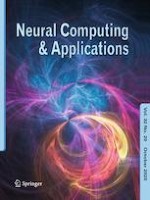05-02-2020 | S.I. : Applying Artificial Intelligence to the Internet of Things
Deep neural network-based clustering technique for secure IIoT
Published in: Neural Computing and Applications | Issue 20/2020
Log inActivate our intelligent search to find suitable subject content or patents.
Select sections of text to find matching patents with Artificial Intelligence. powered by
Select sections of text to find additional relevant content using AI-assisted search. powered by
